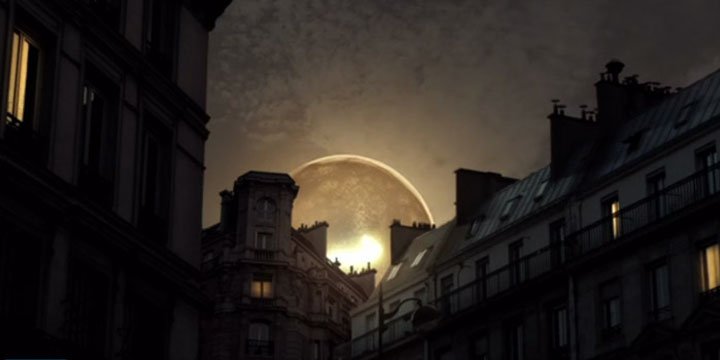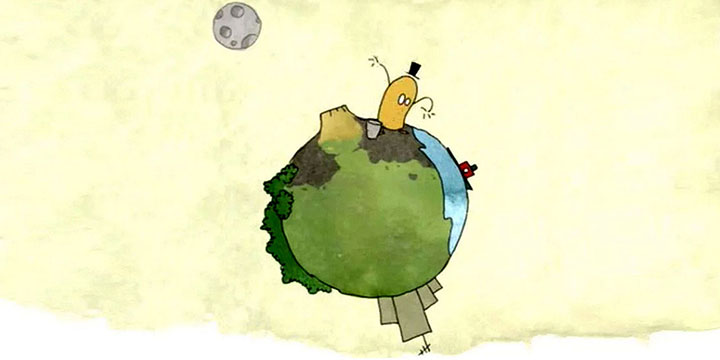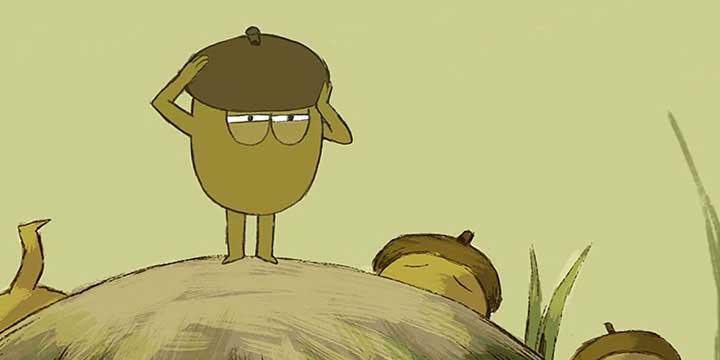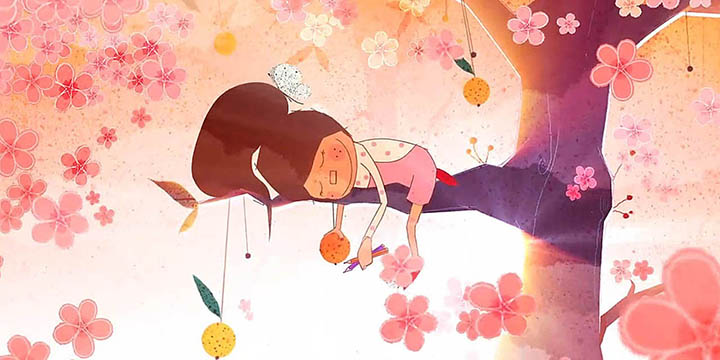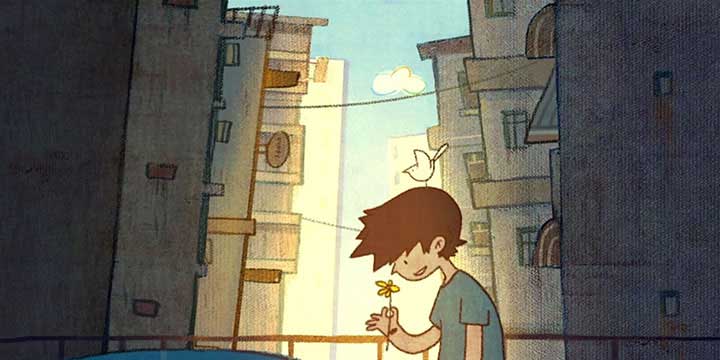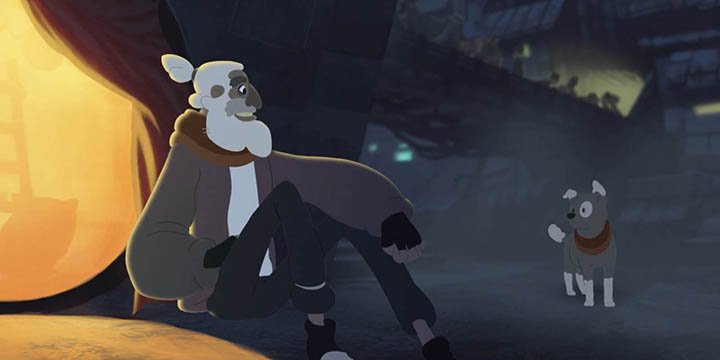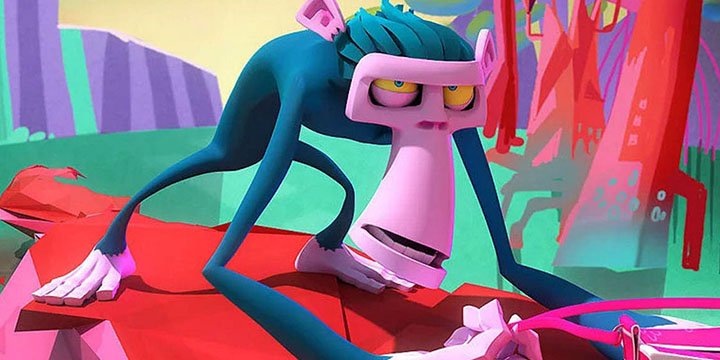Film commentary: Luminaris
Luminaris tells a fairly simple story, where the hero aspires to break out of the rigid frameworks of his environment.His hopes abruptly fail, but he will see the obstacles fall and realise his dream, thanks to the help of the female character he has been rubbing shoulders with without paying attention to her. The final kiss confirms the model of the romance, except that (perhaps not unimportantly) the male/female roles are reversed.
The interest of the film lies in the surprising environment in which this slender scheme is set. Luminaris describes a world where life is regulated by sunlight and where this rhythm is associated with conformism and standardisation, through visual references to the era of triumphant Taylorism. This paradoxical choice (natural light is usually valued) is in a way redoubled by the idea of a technique that is as magical as it is natural, which allows objects to be shaped by chewing the raw material and brought to life with a wink
. In this environment, the hero's dream is a technical object that has been enlarged, perfected to the point where it exceeds all conceivable standards. It is then without logic and can open up to unexpected connections, according to the surrealist aesthetic that silently permeates the film. A light bulb is a dirigible balloon flying towards freedom.
The film thus seems to tell us that it doesn't matter what methods are used - calculation and scientific innovation or tinkering and accident - only imagination and dreaming count. Luminaris not only presents this idea, it actually puts it into practice, using the techniques of film and animation with precision, inventiveness and derision. It is only natural that he pays tribute to the pioneers of the Seventh Art.
Watch other films by Juan Pablo Zaramella
https://www.zaramella.com.arA film by the same author using another animation technique: stop motion
At the operaQuestioning the film: Luminaris
To understand the story, the theme, to express one's sensibility and to exercise one's critical mind.The first task of interpretation for Luminaris should be to specify the elements of the plot, which is quite classic, in the context of the particular universe presented (development, role of the characters).
One could then focus on describing the strange laws that are presented. Firstly, there is the solar rhythm which seems to impose itself on the characters (see the symbols of light and order, the staging of the movement of the characters in line with the progress of the sun, etc.) - note, for example, the stages of the working day described and how the hero is subjected to them. Then there is the "magic" technique of making light bulbs.
On the other hand, we could try to discuss the references, in particular the choice of the "retro" atmosphere: costumes, objects, acting, music (the choice of tango for an Argentinean film).
Finally, we will explain the animation technique used (pixilation) and we can try to imagine the complexity of the filming (scenes where sunlight is used, for example), or if other techniques were used.
1 What is the hero's initial situation? What is he trying to achieve? What obstacles does he encounter?How does he overcome them?
He works in a factory making light bulbs. He tries to make a huge light bulb by himself to escape from the city. It is a complicated task. He needs materials to make many tests, but he is not allowed to take any for himself.He is helped by his colleague.
2 What makes the hero special among the other workers?
He does not hesitate to defy the rules of the factory to make his project succeed. He tries to escape the rules to which everyone else is subject.He imagines another life.
3 Why is the foreman, at the end of the film, furious to see the two heroes fly away?
Ishe angry at not having succeeded in stopping them (which is his job)? Ishe jealous of their freedom?
4 What inthe film sets the pace and order of the working day?How do we see it?
It is the sun.We see the objects and people moving forward at the same time as the shadows.
5 What is the work of the characters?What technique do they use?
They are workers in a factory. They work on a production line. Each one has a precise and limited role.Their technique is more like magic.
6 What period of history does the film remind us of?
The 1920s-1930s, according to the style of the architecture.This is the time when this form of work became widespread.
7 How do the actors act?Is it the same as in a normal film?
Their expressions are exaggerated.
8 How was the sequence of the journey to the factory filmed?
This technique is called pixilation.
Pictures were taken at regular intervals in the streets, with the actors placed a little further forward each time, following exactly the progression of the sun, so that when they are put in series, it looks as if the actors are gliding with the sun.
9 How was the scene filmed where the foreman gets angry?
It is a series of photographs where the actor takes on a slightly different expression each time and cotton is added to his ears to represent smoke.


